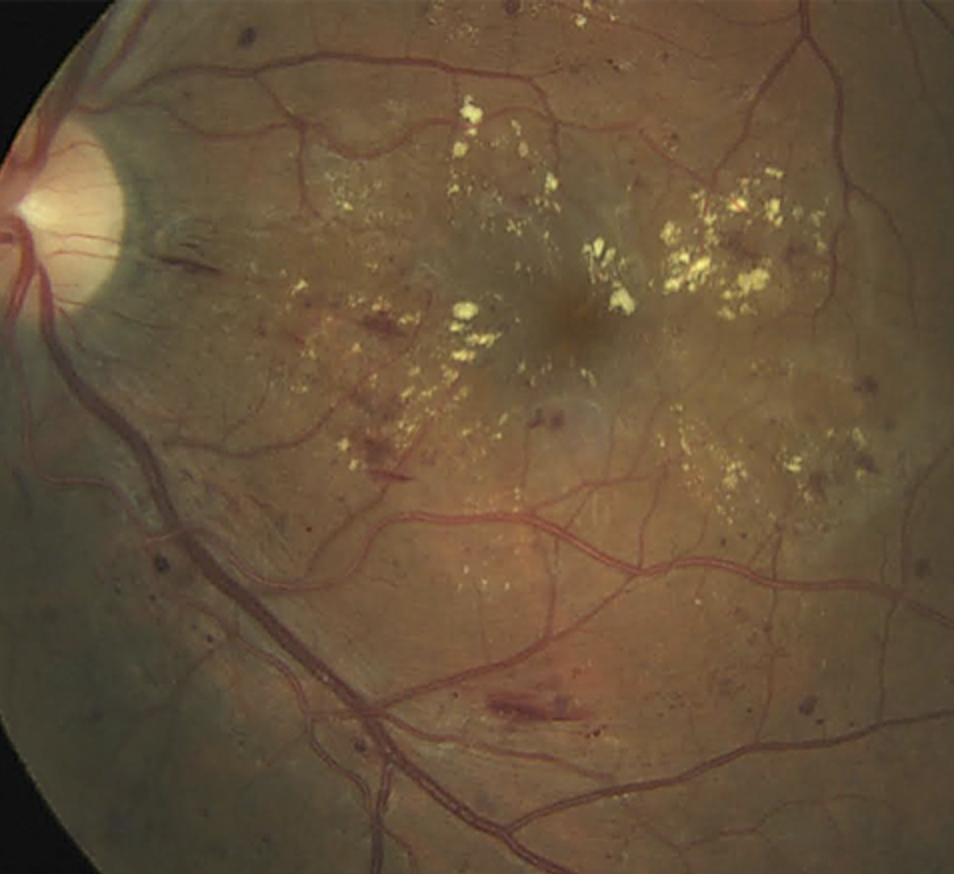 |
| The DME risk factor profile has expanded to include increased aqueous uric acid. Photo: Erik Hanson, MD. |
Given the challenges and expenses associated with the management of diabetic macular edema, researchers seeking potential new biomarkers and therapeutic targets recently investigated the association of uric acid and glucose in aqueous humor in DME patients with type 2 diabetes. While their findings suggest no correlation with glucose, they did determine that increased aqueous uric acid is an independent risk factor for diabetic macular edema.
A total of 585 eyes from 585 patients were included in this retrospective study. The researchers enrolled diabetes patients with and without retinopathy and used non-diabetic patients with age-related cataract or AMD as controls.
The data showed both aqueous uric acid and aqueous glucose increase in diabetic patients; however, the study authors observed that only aqueous uric acid is associated with macular thickening in patients with diabetic macular edema. The findings also demonstrated that elevated aqueous uric acid—not aqueous glucose or serum uric acid—is an independent predictor for diabetic macular edema.
The researchers reported that if aqueous uric acid (<2.46mg/dl) and aqueous glucose (<6.43mmol/L) were used as a reference, high uric acid (≥2.46mg/dl) alone was associated with a 5.83-fold increase in the risk of diabetic macular edema, while high glucose (≥6.43mg/dl) alone was not.
“In conclusion, our analysis of the aqueous humor uric acid and the macular thickening provides new insights into the pathogenesis of diabetic macular edema. We find evidence for the first time that increased levels of aqueous uric acid, but not aqueous glucose, are a strong predictor for diabetic macular edema,” the study authors wrote. “Aqueous uric acid, probably produced by the ischemic retina, might be involved in diabetic macular edema through mediating the activity of immune cells. Intravitreal uric acid-lowering agent might be beneficial for the management of diabetic macular edema.”
Qin YJ, Zhang YL, Zhang YQ, et al. Elevated level of uric acid, but not glucose, in aqueous humor as a risk factor for diabetic macular edema in patients with type 2 diabetes. Retina. February 7, 2022. [Epub ahead of print]. |


